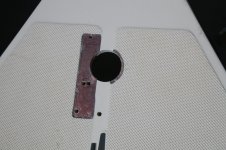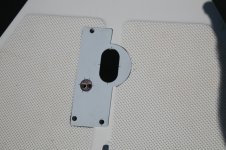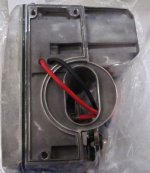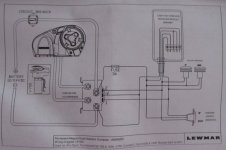I'm in the process of installing (or rather "planning") a Lewmar 700 Pro (horizontal) windlass. Although, I tell you, after lugging that thing up to the foredeck and looking at how big it is, how clean the foredeck is now, etc.... I had second thoughts! But I just have to think back to Jay (Hunky Dory) anchoring his boat by standing back with a remote control in hand and then I "re-want" it 
Anyway, after laying out all the parts and pieces, I came up with a question: The installation manual calls for a 3" round hole (for the "deck pipe" portion), but the hole in the bottom of the windlass -- and the gasket -- is a smaller oval. I borrowed the first two photos from Voyager's excellent album:
The hole they call for:

The shape of the gasket, which mirrors this template, and also the actual "hole" in the windlass bottom:

This is the bottom of the windlass:

If you use the 3" round hole, then a section of the gasket and that round plate will have nothing but air beneath them. Probably not a real issue, but since I don't have a 3" hole saw on hand, and could easily make a smaller, oval hole, I wondered. I couldn't see any downside (the chain seems to drop straight down, but I would probably make the oval slightly wider than that oval opening anyway*), but figured I didn't want to cause an "I must be smarter than they are" problem. My best guess was they were trying to make the hole drilling "easier."
So I put in a call to Lewmar last week. They called back today, and I asked them about it. They said that people had found it more complicated (more tools needed) to make an oval hole, and so when they slightly re-designed some of their windlasses, they decided to make them all work with one, 3" hole. All the same, all "easy."
So that answered my question. I'm going to go with an oval hole, because it's of about equal difficulty for me, and because I will like it slightly better without the "extra" hole under that plate (not sure yet if I will use the gasket or sealant -- usually I quickly toss the gasket and use good sealant, but it is a very nice gasket, so haven't decided yet).
*I did look at another C-Dory with the older windlass that required the smaller, oval hole. I wanted to see how likely the chain would be to "flare out" to the sides and possibly require a slightly wider hole. It seemed to want to drop straight down, and there was no evidence of scuffing on the side of the hole. I may add a bit of extra space anyway.
Sunbeam
Anyway, after laying out all the parts and pieces, I came up with a question: The installation manual calls for a 3" round hole (for the "deck pipe" portion), but the hole in the bottom of the windlass -- and the gasket -- is a smaller oval. I borrowed the first two photos from Voyager's excellent album:
The hole they call for:

The shape of the gasket, which mirrors this template, and also the actual "hole" in the windlass bottom:

This is the bottom of the windlass:

If you use the 3" round hole, then a section of the gasket and that round plate will have nothing but air beneath them. Probably not a real issue, but since I don't have a 3" hole saw on hand, and could easily make a smaller, oval hole, I wondered. I couldn't see any downside (the chain seems to drop straight down, but I would probably make the oval slightly wider than that oval opening anyway*), but figured I didn't want to cause an "I must be smarter than they are" problem. My best guess was they were trying to make the hole drilling "easier."
So I put in a call to Lewmar last week. They called back today, and I asked them about it. They said that people had found it more complicated (more tools needed) to make an oval hole, and so when they slightly re-designed some of their windlasses, they decided to make them all work with one, 3" hole. All the same, all "easy."
So that answered my question. I'm going to go with an oval hole, because it's of about equal difficulty for me, and because I will like it slightly better without the "extra" hole under that plate (not sure yet if I will use the gasket or sealant -- usually I quickly toss the gasket and use good sealant, but it is a very nice gasket, so haven't decided yet).
*I did look at another C-Dory with the older windlass that required the smaller, oval hole. I wanted to see how likely the chain would be to "flare out" to the sides and possibly require a slightly wider hole. It seemed to want to drop straight down, and there was no evidence of scuffing on the side of the hole. I may add a bit of extra space anyway.
Sunbeam


